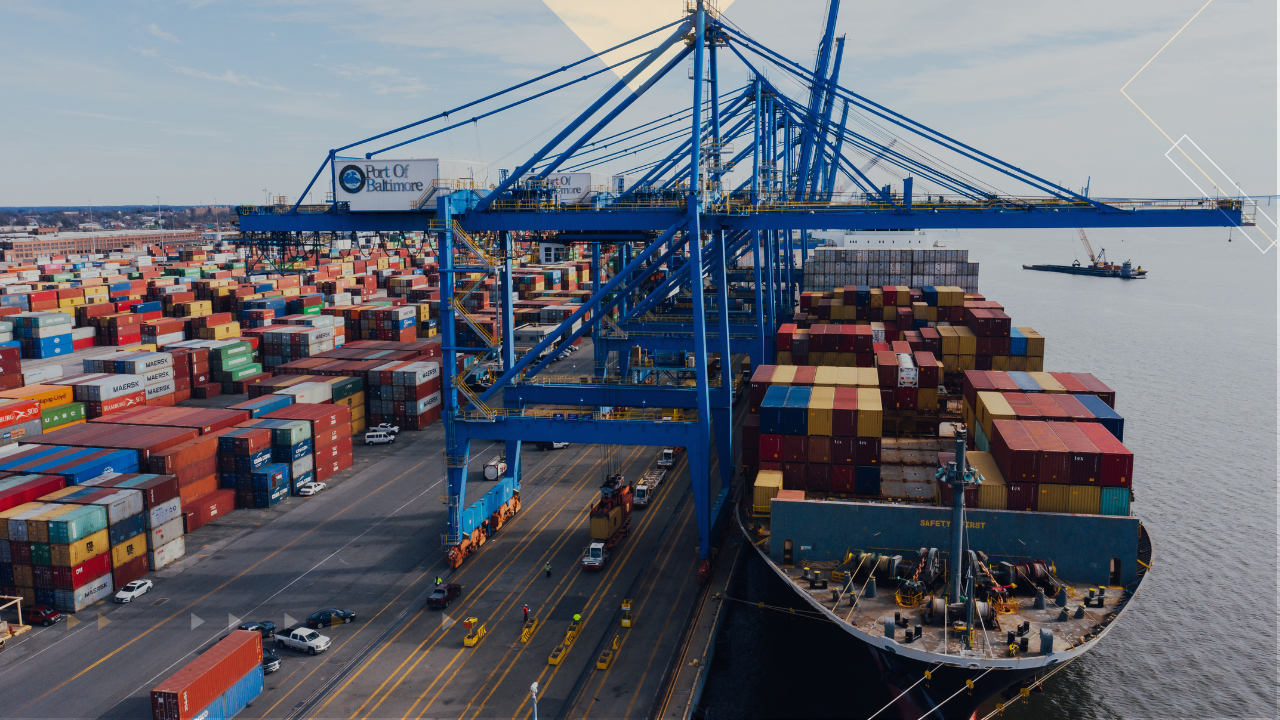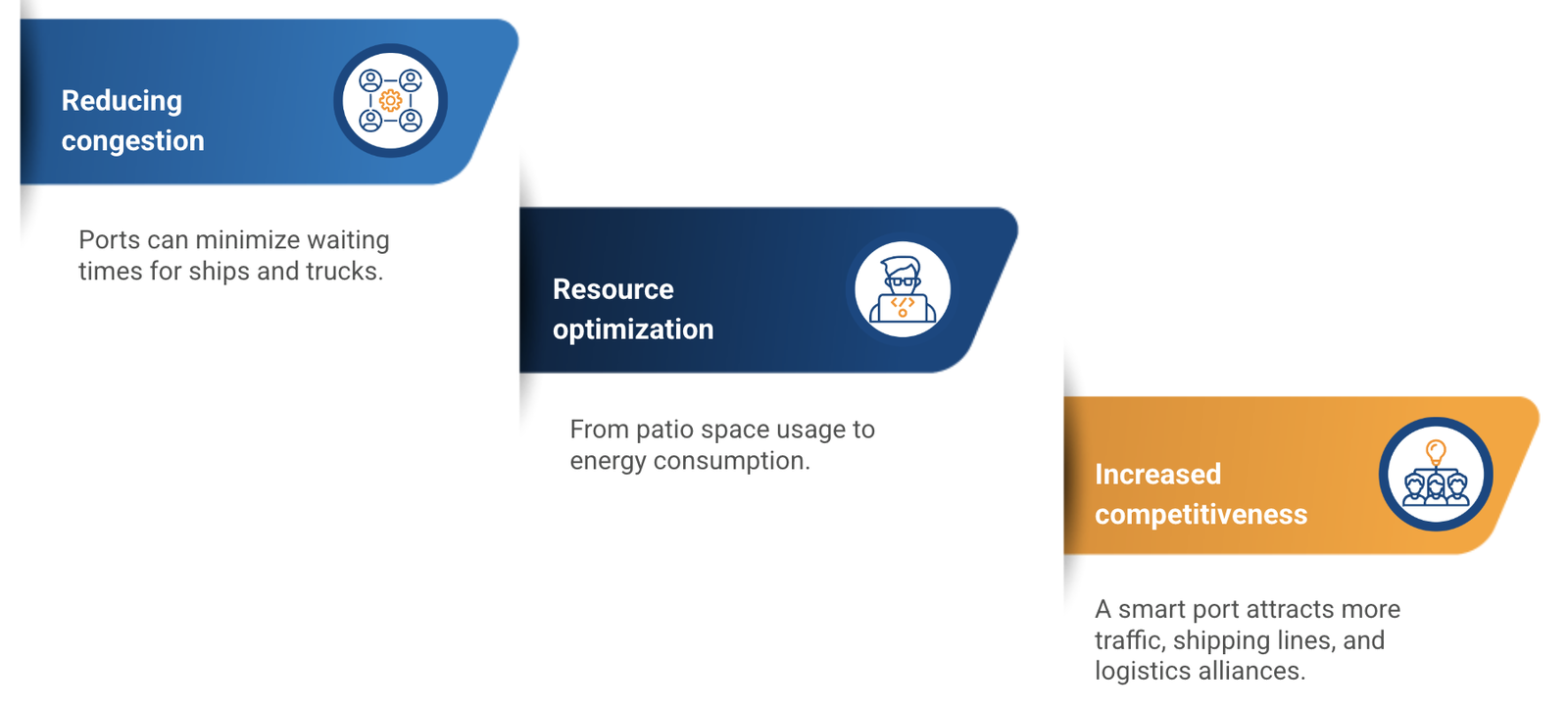
Port process automation with AI: How it works and use cases
Table of contents
Quick Access

Port automation has gone from being a technological aspiration to a critical necessity in global maritime trade.
Amid rising cargo volumes, terminal congestion, labor shortages, and growing pressure to improve sustainability, ports are turning to artificial intelligence (AI)-based solutions to transform their operations.
Panama, as a key logistics hub in Latin America, is no exception: port automation in Panama represents a tremendous opportunity to optimize processes, reduce costs, and ensure long-term competitiveness.

Why is port automation necessary?
The role of ports in global supply chains is crucial. However, according to Safety4Sea, as of March 2025, 8.4% of the global container fleet was experiencing delays due to port congestion.
One of the less discussed but critical factors is the time lost during Port State Control (PSC) inspections. These delays, coupled with infrastructure and manpower shortages, highlight the need for solutions that anticipate and resolve problems before they impact operations.
In this context, AI offers a way to transform reactive ports into proactive and predictive environments, capable of adapting to logistical challenges in real time.
How to implement port automation with AI?
Automating port processes using artificial intelligence is not an immediate task, but it is achievable through a strategic, phased approach. Below is a practical guide on how to do it:
1. Diagnosis and analysis of current processes
Before incorporating AI, it is essential to analyze existing workflows: loading and unloading, inspections, internal transport, vessel monitoring, and document management. Identifying bottlenecks will allow you to prioritize which processes to automate first.
2. Adequate technological infrastructure
According to Maritime Gateway, the combination of AI with 5G networks, IoT sensors, and cloud platforms creates a "digital nervous system" for ports. This infrastructure allows for the capture, analysis, and response to data in real time. Therefore, investing in this connectivity and sensorization is an essential preliminary step.
3. Integration of AI solutions in key areas
Main applications of AI in port automation include:
Automated container handling: Using Automatic Guided Vehicles (AGVs), Automatic Stacking Cranes (ASCs), and Terminal Operating Systems (TOS), as at the Port of Qingdao in China.
Intelligent scheduling: Algorithms that optimize the allocation of cranes, trucks, and cargo slots to reduce downtime.
Predictive analytics for CPPR inspections: Systems that analyze historical and real-time data to predict potential inspection failures or delays, enabling corrections before berthing.
Automated document management systems: Eliminate errors and delays in the exchange of information between shipping companies, customs authorities, and logistics operators.
Autonomous vehicles: Transport cargo within the port, improving safety and reducing costsLabor.
4. Training and Change Management
A fundamental part of success lies in preparing staff to operate and supervise automated systems. This involves technical training and a cultural change strategy toward digitalization.
5. Scaling and Continuous Improvement
After automating key processes, it's possible to scale to other areas and apply more advanced AI tools such as machine learning for predictive maintenance, visual recognition for safety, or digital twins of the port.

International use cases
- Port of Qingdao (China): Its automated terminal operates 24/7 without direct human intervention. AGVs transport containers from the dock to storage areas, where robotic cranes position them with millimeter precision. Everything is coordinated by a central AI-powered operating system.
- Ports of Brisbane and Melbourne (Australia): Incorporated intelligent scheduling systems, automated cargo handling, and autonomous vehicles for internal operations, generating significant increases in efficiency and emissions reductions.
These cases serve as inspiration for implementing port automation in Panama, adapting the technologies to their context and operating volume.
Benefits of port automation with AI
- Congestion Reduction: Thanks to predictive capabilities and intelligent scheduling, ports can minimize vessel and truck waiting times.
- Increased Safety: Less exposure of human operators to risky environments by delegating tasks to automated systems.
- Proactive Regulatory Compliance: As Safety4Sea highlights, real-time data allows for preparation for inspections, reducing CPPR detentions.
- Resource Optimization: From yard space usage to energy consumption.
- Increased global competitiveness: A smart port attracts more traffic, shipping lines, and logistics alliances, consolidating its position in the region.
- Sustainability: Lower emissions thanks to the efficient use of electric cranes and autonomous vehicles optimized by AI.

Port automation in Panama: A strategic opportunity
Due to its strategic geographic position and the volume handled by the Panama Canal, Panama has a great opportunity to become a regional pioneer in port automation with AI.
Initiatives that integrate predictive systems, IoT sensors in terminals, autonomous vehicles, and cloud platforms can place Panamanian ports at the technological forefront of Latin America.
Furthermore, having modern infrastructure not only increases competitiveness but also strengthens resilience to global logistics crises, such as those experienced during the pandemic or geopolitical conflicts.
Final recommendations for successful implementation
- Begin with pilot projects in specific areas such as container handling or document management.
- Establish strategic alliances with technology providers with experience in AI and the port industry.
- Evaluate the return on investment (ROI) of each implemented stage.
- Seek international standards for interoperability with global systems.
- Adopt a continuous improvement approach, reviewing KPIs and adjusting algorithms periodically.

Rootstack: A strategic partner in port automation with AI
For Panamanian ports looking to make the leap toward digitalization and artificial intelligence, Rootstack is positioned as a trusted provider with experience in AI and automation solutions.
With a consultative and technological approach, Rootstack helps integrate intelligent platforms, create efficient workflows, and apply predictive analytics that maximize performance. Port automation.
Thanks to its experience in digital transformation projects in Panama and other markets, Rootstack is an ideal strategic partner for implementing robust port automation solutions in Panama. Contact us.
Related blogs

Microservices architecture: Designing scalable systems

External threats to computer security | Rootstack

Rootstack Cybersecurity Solutions: Protection and Monitoring

Core Banking Software Platforms: Key Features to Look for in 2026

Software development services company: What could we do?
